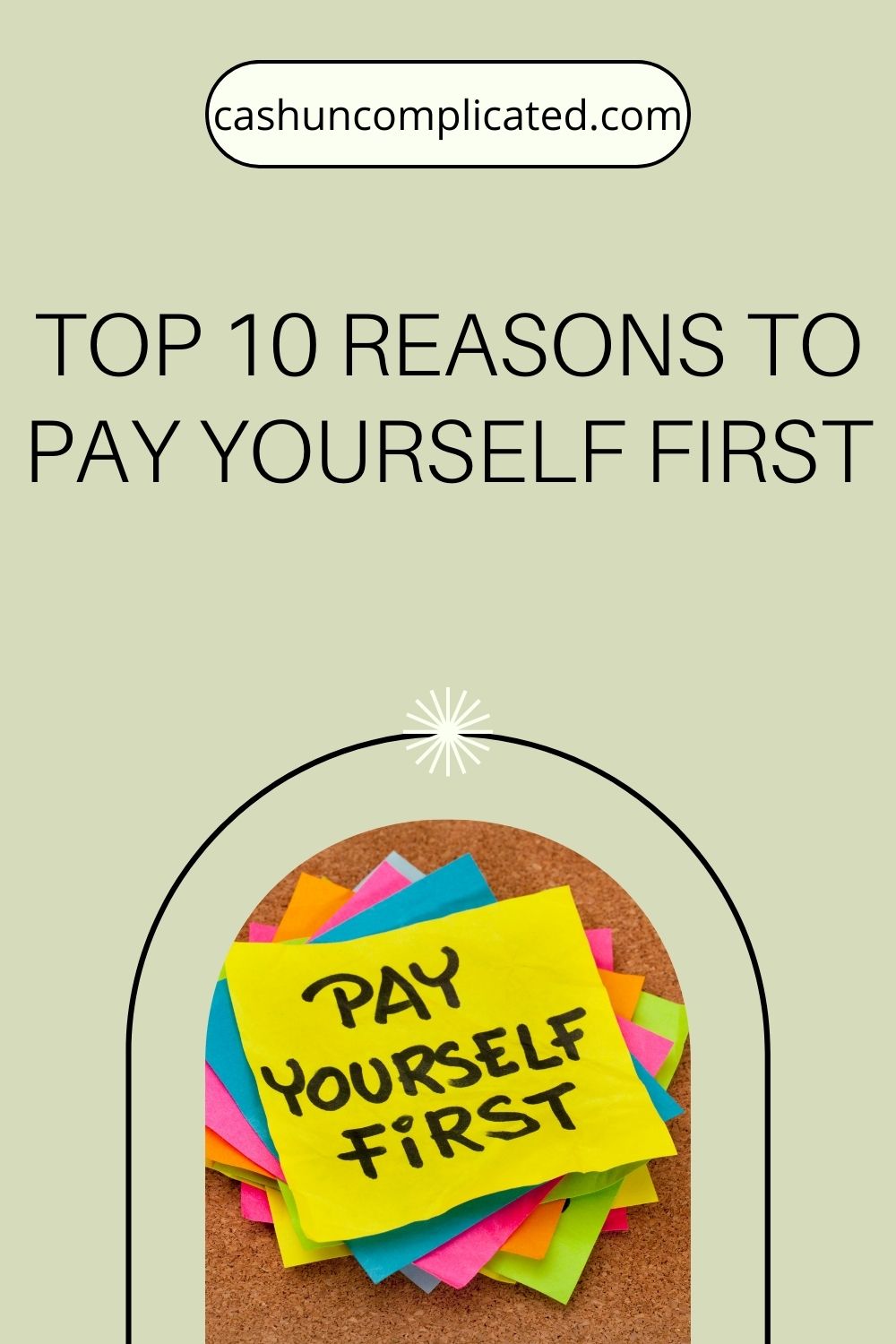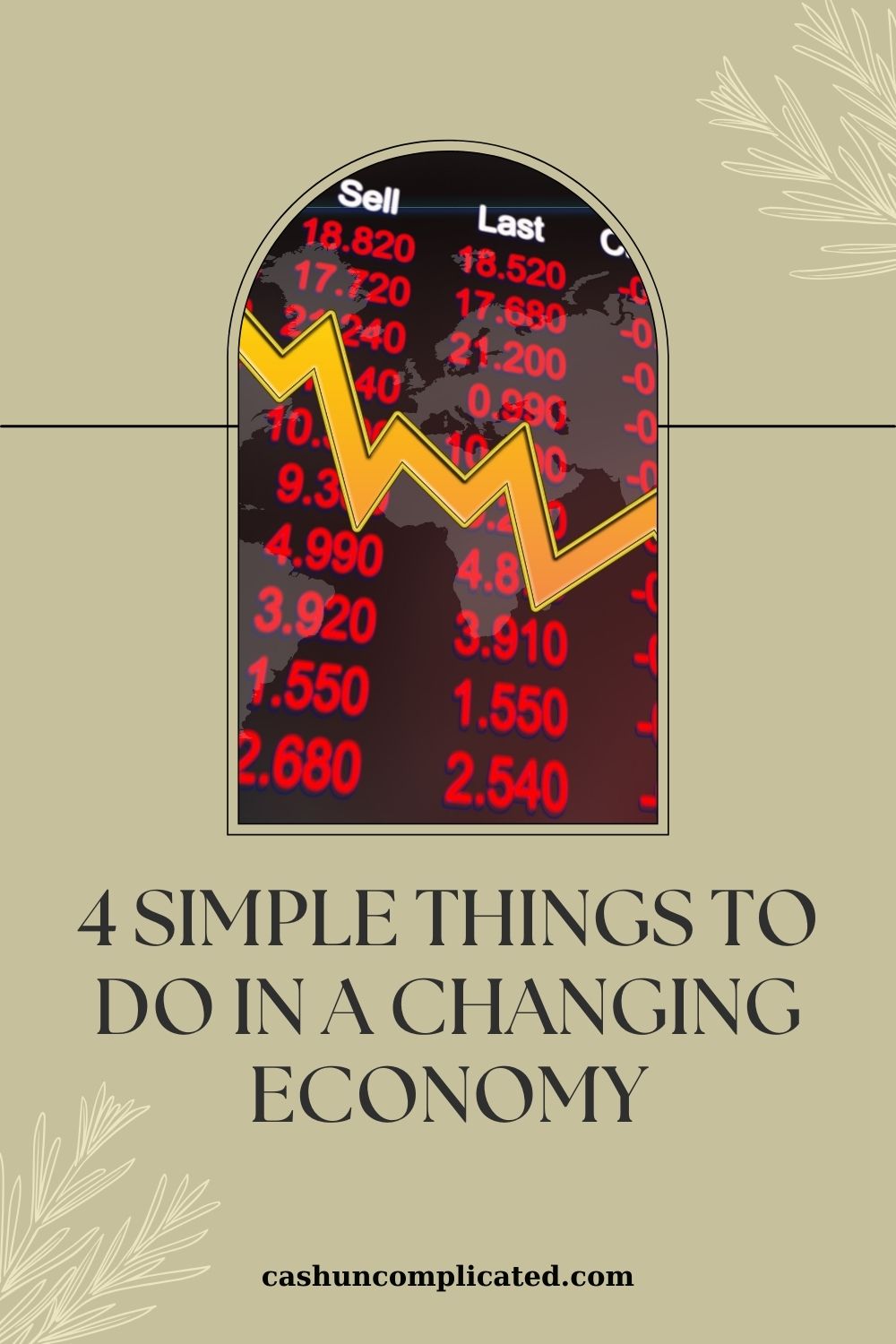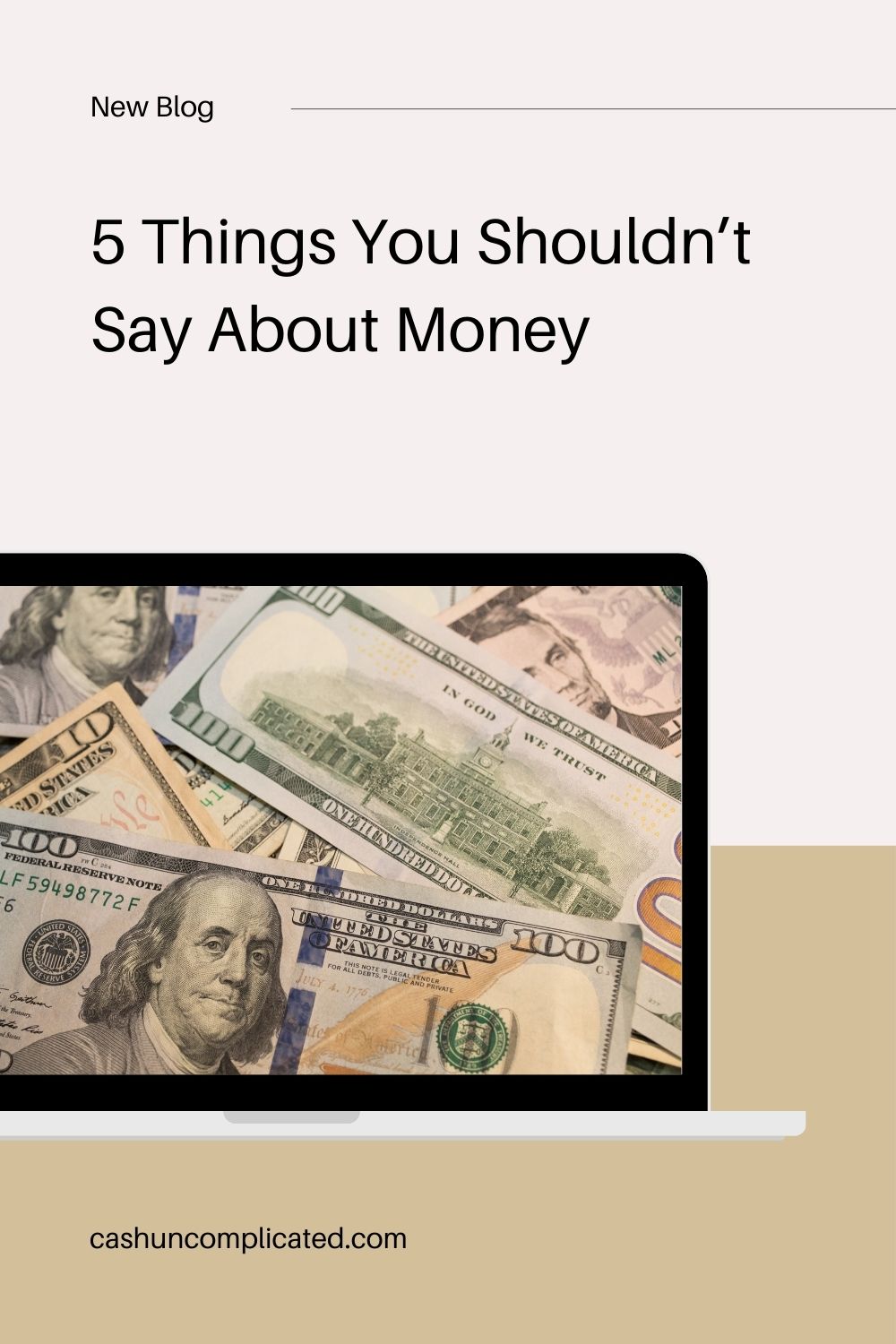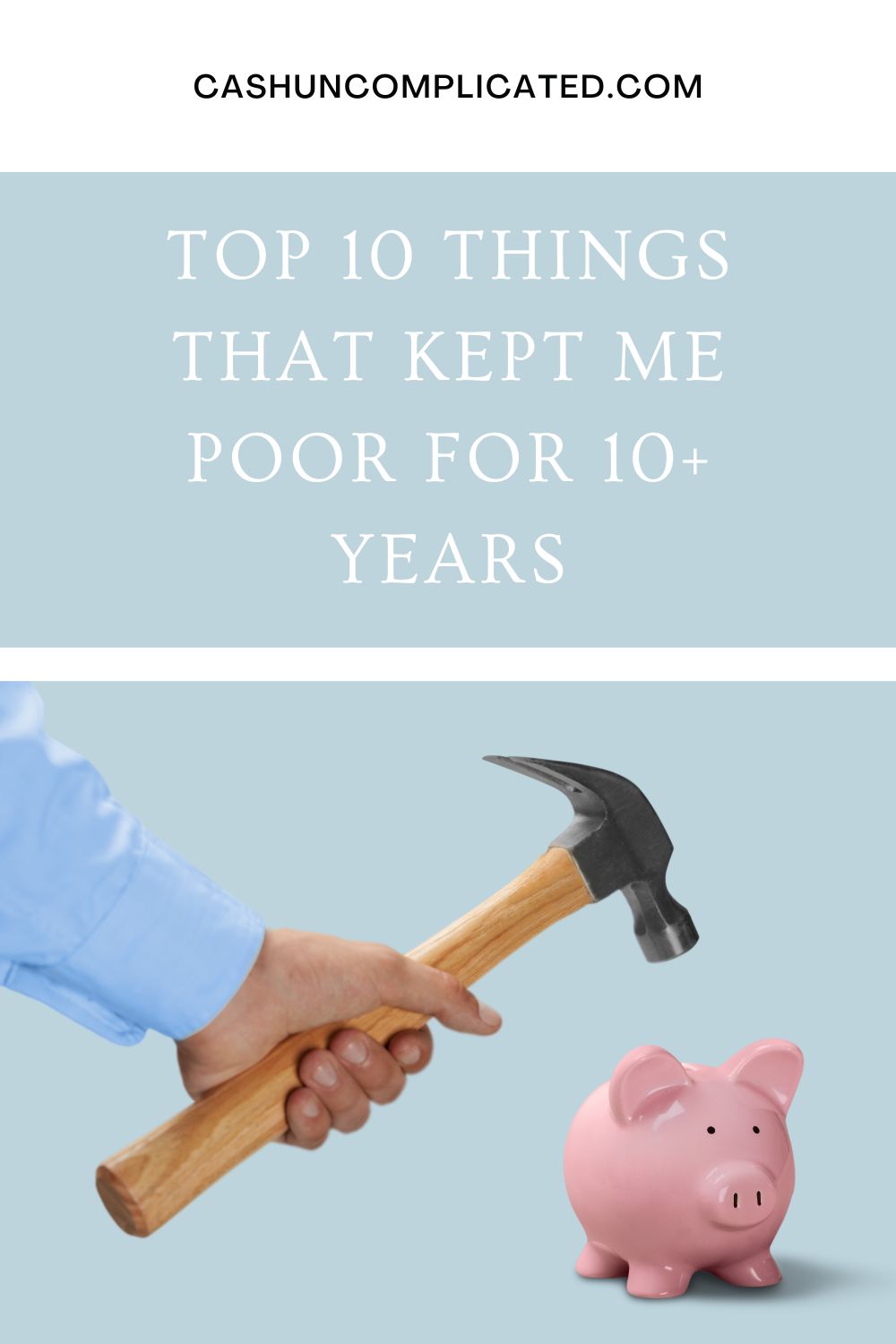Pay yourself first. You may have heard this term before, or it might be the first time you’re seeing it. However you found it, I’m glad you did. Because it’s one of the most important principles in personal finance and has been instrumental in my own financial transformation.
What Does It Mean to Pay Yourself First?
Pay yourself first means to literally pay yourself first. Before any bills, rent/mortgage, car payments, etc. Find a way to pay yourself first.
The idea is that if you pay yourself first, you’ll find a way to live off the rest. But if you don’t pay yourself first, you’ll spend your money for the month and won’t be able to pay yourself. When you pay yourself first, you’ll get the job done–when you don’t, it will fall by the wayside.
How to Pay Yourself First
When I first heard the concept of pay yourself first, I really struggled with it. I was already living paycheck to paycheck and felt like there was no way I could put 10 percent or more of my income into an investment. I just didn’t see how it would work out.
However, as I looked more into it and assessed my values, I realized I was spending on some things that didn’t matter. That alone allowed me to begin paying myself first. I believe that most of us can find things that don’t matter as much as we thought they did, and can find a way to invest 10 percent or more. Ideally 20 percent or higher.
Secondly, to make it easy to pay yourself first, automate it. Set up the automation through your employer or bank to automatically transfer at least 10 percent of your income to an investment account. This often can be done straight from a paycheck, or you can do it through a checking account.
Automation guarantees that you will pay yourself first because there is no opportunity not to. It’s already set up for you, all that you have to do is live off the rest of your income. Which the majority of people get used to after only a couple months.
Reasons to Pay Yourself First
There are endless reasons to pay yourself first. Rather than make a massive list, I’m just going to list 10 of my top reasons.
Number 1: It Can Be Automated
Number one is a simple reason–it can be automated. Which means that you don’t have to think too much about it. Set it up once, then occasionally maintain and update. That’s it. It’s a simple process that pays off huge dividends, especially as compounding begins to occur.
As humans, it’s natural to seek the path of least resistance. Automation is such a path. There’s not a lot of thinking that has to go into something you already set up. Plus, after only a few months you’ll be able to see that it’s working as your investments start to grow.
Number 2: Repeatable Process
Paying yourself first is a repeatable process. The hard work is in setting up the automation (and it’s really not that hard either). Then it’s done and you can go about living your life other than occasionally updating the amount you want to invest.
Month after month, year after year, decade after decade; paying yourself first via automation is a repeatable process. To put it in concise terms–it’s easy and it works. When things are easy and there’s evidence that it’s working, there’s not a lot of reason to change.
Number 3: Removes the Friction/Takes the Thought Out of It
Removing the friction is a concept I learned from one of my favorite books Atomic Habits. The idea is to make things as easy as possible to succeed towards your goals/what you want to do. A few examples:
- If you’re trying to eat healthier, put the healthy snacks in the front of the refrigerator and pantry. Unhealthy snacks are either not purchased or made more difficult to access.
- For someone wanting to exercise more, pack your gym bag and put it in the trunk of your car.
- In the case of someone wanting to read more, leave a book on the nightstand and the TV remote in a drawer.
In all of these examples, the desired behavior is made easier by both setting it up in advance and making it the easiest option. In the case of the snacks, the healthier snacks are put at the front of the refrigerator and the unhealthy snacks are either not purchased or out of reach. So to access an unhealthy snack, you’d have to either go to the store or dig it out of the back of the pantry.
For the person who wants to exercise, the gym bag is already packed and ready to go. It’s incredibly convenient to go straight to the gym because it’s already packed. And it’s easier for the person who wants to read more to just grab a book off the nightstand than go walk to the drawer to get the TV remote.
The same principle applies to automation. It’s easier to just let the automation keep going than go into your account and stop it. There’s no work that needs to be done at the start of the month because it’s already done for you. And it would be harder to stop than continue, naturally reducing the friction.
Number 4: Scalability
Number four on the list of reasons to pay yourself first is scalability. Paying yourself first and automating your money is a natural way to scale. Reason being is that it’s organic and evolves right alongside with you as you grow.
Here’s an example. Someone making $36,000 per year, or $3,000 per month (after taxes) at an entry level job. Someone in this position following the principle of pay yourself first would invest 10 percent or more of their income. A few different examples using various percentages:
- 10 percent equals $300 per month
- 20 percent is $600 monthly
- 30 percent comes to $900 per month
- 40 percent equals $1,200 per month
- 50 percent equates to $1,500 monthly
Whether it’s 10 percent or more than 50 percent, the automation and principle of pay yourself first is set. If the person in this example increases their pay to $5,000 per month in a few years, their automation changes significantly.
- 10 percent equals $500 per month
- 20 percent is $1,000 monthly
- 30 percent comes to $1,500 per month
- 40 percent equals $2,000 per month
- 50 percent equates to $2,500 monthly
The person in the example doesn’t have to do much other than keep the percentages parallel to their wage growth. So if they invested 20 percent while making $3,000 per month and continued to invest 20 percent while making $5,000 per month, they would naturally invest $400 more ($1,000 minus $600).
There’s no decrease in the standard of living (the living standard is actually increased) and they are investing more without having to make any drastic changes other than keeping percentages parallel to wage growth. Many people also increase their percentages as wage growth goes up because they are already used to the standard of living.
Number 5: Prevents Lifestyle Creep
Lifestyle creep is one of the biggest killers in personal finance. It’s when spending parallels wage growth, which leads to a net gain of zero. Treading water, just getting by, living paycheck to paycheck.
When you pay yourself first, lifestyle creep is naturally avoided. Instead of allowing spending to increase when income increases, paying yourself first is an intentional act that puts the new money into your investments. The best way to illustrate this is with an example.
For the sake of even numbers, let’s use the example of someone who makes $150 more per month every year. If they pay themselves first, they will have $150 more invested every month after year one. After year two, they’ll be investing $300 more per month. After five years $750 per month, and after ten years a very noticeable $1,500 per month!
That’s just by following the principle of pay yourself first. However, if that money just goes to a checking account, it’s going to get spent. Meaning after 10 years, not only is the person no better off investment wise, but they also require a higher standard of living, which is a dangerous place to be in if there’s a job loss or temporary loss of income.
I provide several examples of this in my book Cash Uncomplicated and it’s one of the most important principles I followed to turn around my own personal finances.
Number 6: Guaranteed Way to Invest
Pay yourself first is a guaranteed way to invest, especially if combined with automation. Every month the money is transferred from either a paycheck or checking account into an investment account. Transferred and done, nothing else to do.
No matter what happens (short of an extreme emergency), it’s a guaranteed way to invest. Month in and month out this is an incredibly powerful concept.
- Investing $500 per month equals $6,000 invested for the year, excluding interest
- $1,000 per month invested equals $12,000 after one year, not including interest
- $5,000 invested per month comes out to $60,000 per year, excluding interest
Even more powerful is what happens after a few years. Investing $500 per month for a five-year time period equals $30,000. And investing $5,000 per month for five year equals $300,000. None of these figures factors in any interest either, which exponentially increases returns.
Related: The Road to a Million: How Much You Need to Save to Get to One Million Dollars and More
Number 7: Time Tested
Pay yourself first is not a new trend of the week concept or flavor of the month. It’s tried and true, and battle tested. It was even written about in a book published almost 100 years ago, The Richest Man in Babylon.
That’s because paying yourself first works. I have yet to find a better system. Think about two options:
- Option one is to pay yourself first every month via automation
- Second option is to take what you have left over after the month and then pay yourself
What do you think is going to be more effective? The highly intentional and automated method of paying yourself first or haphazardly paying yourself whatever you have left over. I’ve done both methods and without question, I know which method is most effective.
Number 8: Easy to Maintain
I don’t know about you, but when it makes sense, I take the path of least resistance. Not to say I’m lazy, but I look for systems and hacks to make my life easier. Over time, that helps free me up for other things I want to do with my life.
Following the principle of pay yourself first is easy to maintain. Set it up once and all that’s left to do is maintain as your income increases. Some people choose to look at their investment accounts daily or weekly, but that’s really not necessary when you pay yourself first.
It’s not a bad thing to regularly check and strategize, it’s just not necessary. Briefly scanning your account(s) every month or two should be plenty. Make sure the money goes through and you should be good to go. No real maintenance required.
Number 9: Anyone Can Do It
Anyone can follow the principle of pay yourself first. You don’t need to be a genius, or even hold above average intelligence. You just have to be intentional that you are going to follow this principle, and driven enough to get things set up.
People of all different kinds of backgrounds, intelligence levels, and incomes follow the principle of pay yourself first. It doesn’t matter if you’re a college student with a part-time job, a mid-level manager at a non-profit, or a highly paid CEO of a company–anyone can pay themselves first.
I began paying myself first when money was really tight. I had also completely messed up my personal finances in the years prior to that, so I really wasn’t in an optimized position. But I did it and continue to do it as money has become not so tight. Point being anyone can do it.
Number 10: It’s a True System
The last reason to pay yourself first is that it’s a true system. If I’ve learned anything in life, it’s that systems work. Systems take the guesswork out of things and create a natural structure for success. There are ways to make things work outside of a system, but it makes things harder and much less likely to succeed.
Paying yourself first is a monthly system (or whatever timeframe you choose) of automating your money where you want it to go. From there, it builds and compounds–and inevitably will provide you with financial freedom.
There’s no guesswork or inconsistencies involved–it’s just a system that works over and over again. It works so well that it’s almost boring in a way. But boring in a good way.
Conclusion
Pay yourself first is one of the core personal finance principles I’ve lived by for many years now. And I have no plans to stop following this principle because it works.
When I look at my financial life before and after I started paying myself first, there is no comparison. I was a complete and utter disaster before following this principle. While I am no Warren Buffett, I’ve been much more successful after paying myself first. And it’s not close.
I believe that anyone who begins to pay themselves first will see a remarkable turnaround in their personal finances. There will be no more guesswork, and the money will start to accumulate as the months and years go by. Paycheck to paycheck living will be a thing of the past and there will be a clear path to financial independence.












